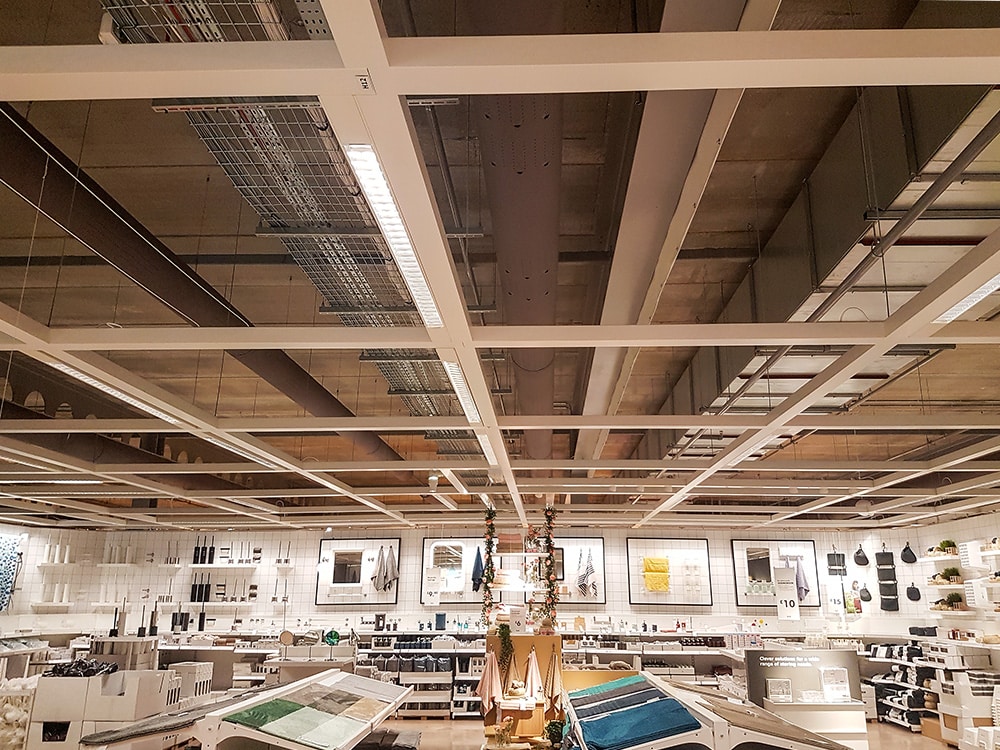How to Fit Existing HVAC Systems with Fabric Diffusers


Retrofitting existing HVAC systems with fabric diffusers is becoming an increasingly popular solution across commercial, industrial, and educational settings. Fabric-based ventilation systems offer flexible design, improved air distribution, and easy installation compared to traditional metal ducting. For buildings looking to upgrade their airflow efficiency without undergoing a complete system overhaul, fabric ducting provides a practical and effective alternative.
Here is a detailed look at how existing HVAC systems can be adapted to incorporate fabric diffusers, along with key considerations to ensure a successful installation.
What are fabric diffusers?
A fabric duct system, sometimes referred to as textile ducting, is designed to distribute conditioned air evenly throughout a space. Unlike metal ducts, which release air through grilles or diffusers in specific points, fabric systems allow air to diffuse gently and consistently through the entire surface of the material or through precisely engineered perforations.
This even distribution helps eliminate draughts and creates a more balanced temperature across large or irregularly shaped rooms. It is particularly beneficial in areas such as schools, offices, warehouses, and leisure facilities, where maintaining consistent comfort levels is important.
Assessing the existing HVAC system
Before integrating a fabric ducting system, a thorough assessment of the existing HVAC infrastructure is essential. The first step is to review the current airflow requirements, including volume, pressure, and temperature control. These parameters determine the size, shape, and layout of the new fabric diffusers.
The type of air handling unit and fan performance should also be evaluated to ensure that there is enough external static pressure available to inflate the ductwork and deliver the air.
It is also important to consider the layout of the space. Ceiling height, obstacles such as beams or lighting, and access points all influence how the fabric duct will be suspended and connected.
Tailoring fabric ducting installation for existing HVAC configs.
Every retrofit installation should be tailored to suit the existing HVAC configuration. Fabric diffusers can be designed in various shapes, including round, semi-round, and quarter-round profiles, allowing them to integrate neatly into different ceiling types or wall-mounted systems.
The ducting can be customised with different air dispersion methods depending on the space and function. For example, micro-perforations and laser-cut perforations can provide uniform low-velocity air diffusion ideal for offices or classrooms, while directional nozzles are better suited for large open industrial spaces that require targeted airflow.
Selecting the correct fabric type is another key step. Permeable materials help prevent condensation in cooling applications, while non-permeable fabrics are preferred when higher velocity or heating airflow is required.
Installing fabric ducting systems
One of the biggest advantages of fabric ducting is its straightforward installation. Once designed to specification, the system is typically delivered ready for assembly. The ducts are suspended from lightweight aluminium or stainless-steel tracks, which can be fixed to the ceiling or roof structure.
The flexible nature of fabric ducts means they can often be fitted without major structural changes to the building. This makes them ideal for retrofit projects where downtime needs to be kept to a minimum.
The installation process generally follows these steps…
Preparation: Assess and clear the area, ensuring the suspension system can be safely fixed.
Connection to AHU: Securely connect the fabric duct inlet to the existing HVAC supply. This often involves using transition pieces to adapt between rigid and flexible sections.
Track installation: Fit the mounting tracks or cables in line with the design layout.
Duct attachment: Attach the fabric sections to the tracks and zip together to form the overall ducts.
Testing: Once connected, airflow is tested to confirm that pressure and velocity meet the design criteria. There is typically no need to balance the system, as a closed fabric duct system is self-balancing.
Are fabric diffusers durable?
Fabric diffusers are designed for durability and simple maintenance. The ducts can be unzipped and removed for periodic cleaning, ensuring that air quality remains high and performance consistent. Anti-static and antibacterial materials are also available, which helps reduce contamination risk in sensitive environments.
Regular inspections should include checking the suspension system, ensuring air outlets remain clear, and verifying that the fabric remains intact and properly tensioned. When maintained correctly, fabric ducting can last for many years while maintaining optimal performance.
Benefits of retrofitting with fabric diffusers
Integrating fabric diffusers into existing HVAC systems offers several advantages. The installation process is faster and less invasive than traditional ducting, while the materials are lighter and easier to handle. Improved airflow distribution enhances occupant comfort and can lead to energy savings as the system operates more efficiently.
Additionally, the visual appeal of fabric duct systems can enhance the appearance of open-plan interiors, with options available in various colours to match the environment.
Retrofitting an existing HVAC system with fabric diffusers is a practical way to modernise air distribution without the cost and disruption of a complete rebuild. By carefully assessing airflow requirements, designing for compatibility, and following a structured installation process, businesses can achieve reliable, efficient, and visually appealing ventilation that meets modern standards.
Looking for more information?
Our experts are on hand to answer any questions. Why not give us a call or drop us a message, We’ll work with you to find the right solution.
Contact us

